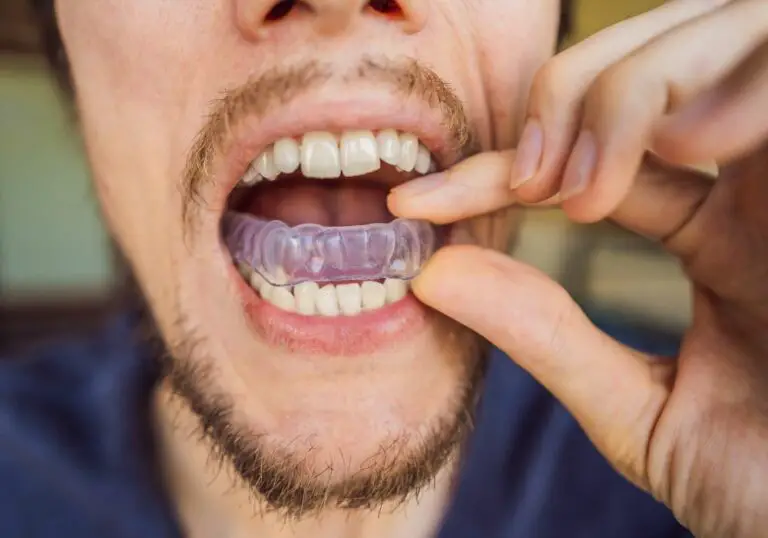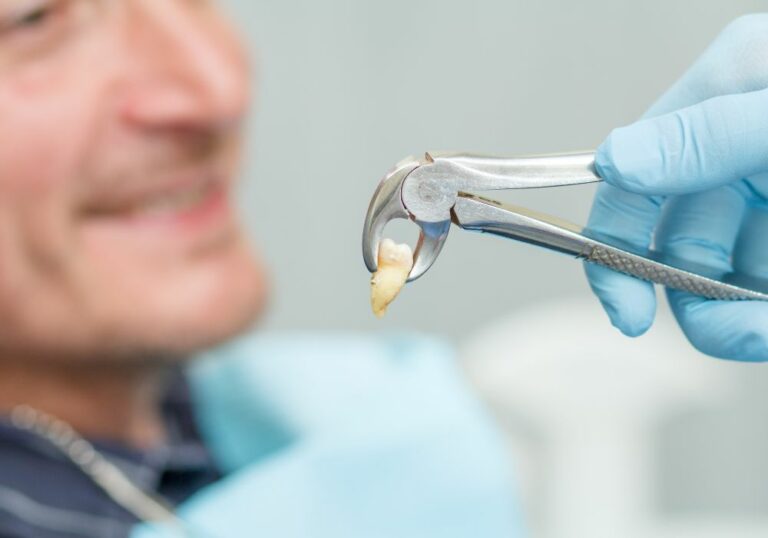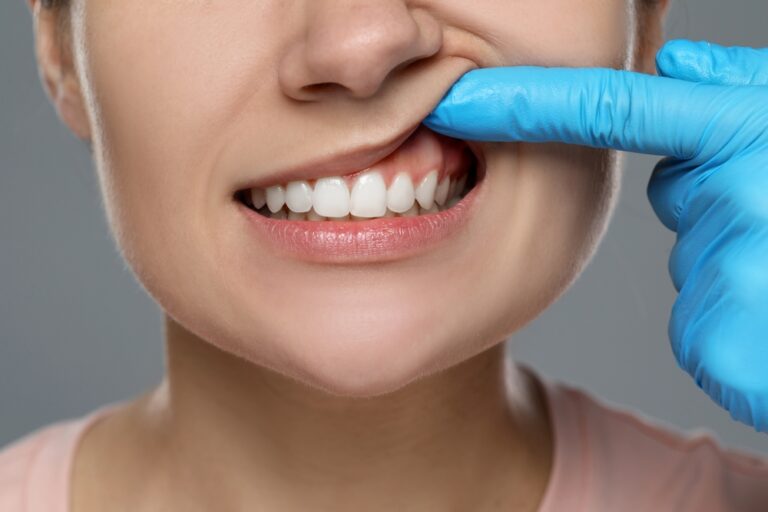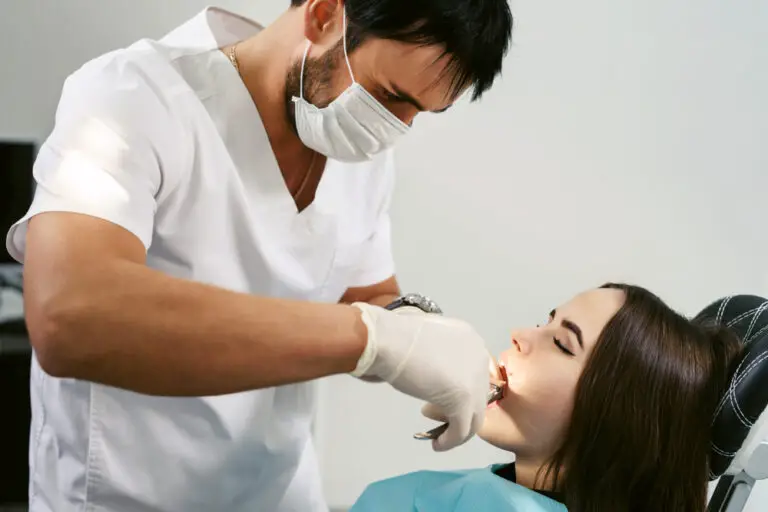Wisdom teeth procedures are fairly common, and everyone has seen the humorous videos of their friends waking up from their procedures. But few really understand the aftercare until they’re in the dentist seat, including how to clean wisdom teeth holes.
When you have teeth extracted, you’re left with a socket where those teeth once were. The mouth will heal eventually, but you need to keep it clean with routine care and proper rinsing processes.
This is not necessarily as straightforward as it seems, and you must take care not to cause more damage while your gums are healing. Keep reading to learn more about the different ways you can clean wisdom teeth holes and how to keep them clean.
How to Tell If Your Wisdom Teeth Holes Need Cleaning
It’s usually pretty easy to tell if you have food particles or other debris stuck in your tooth socket after wisdom tooth extraction. In most situations, you’re able to feel the tiny invader before it becomes a problem.
Other times, it’s not as obvious. If you don’t realize there’s something there and the problem doesn’t take care of itself you’ll notice a foul odor as the food begins to ferment and agitation as it attracts harmful bacteria that interferes with your healing process.
If your surgery site is taking longer to heal, it may be because there are food particles interfering with the normal process. These food particles can prevent closing of the hole well before infection sets in, so keep an eye on the site and keep it as clean as possible.
Ways to Clean Wisdom Teeth Holes
There are a number of ways to clean your mouth after a wisdom teeth removal surgery. What you use depends on personal preference and recommendations from your oral surgeon, as well as where you are in your healing journey.
Some ways to clean your wisdom tooth hole include:
- Salt water
- Herbal tea
- Non-alcohol mouthwash
- Water syringe
- Spray bottle
- Oral irrigator
- Soft toothbrush
- Cotton swab
More serious concerns could be handled in-office by your dentist.
1. Warm Salt Water or Herbal Tea Rinse
Most dentists recommend that you avoid any sort of rinse for at least 24 hours following your wisdom tooth removal surgery. A salt water mouth rinse is most recommended because it keeps the area clean without disrupting the blood clot or stitches.
To do this:
- Mix 1 teaspoon of salt with 1 cup of warm or room temperature water (avoid hot or cold water–it won’t feel good, and it can cause more harm than good)
- Softly pull the water across all areas of your mouth for 30 seconds to a minute (do not swish–this can be too vigorous for the healing sockets)
- Allow the water to fall out of your mouth instead of spitting it out
You can repeat this process up to 4 times in a single session.
Alternatively, you can use a warm herbal tea rinse to keep the area clean. Many teas, like chamomile and green tea, have anti-inflammatory properties that help manage pain or swelling after your surgery.
Follow the same method used for salt water rinses, but take greater care in keeping the area clean from acid and other non-particled residue.
2. Non-Alcoholic Mouthwash

You can also use a gentle mouthwash after you’ve hit the 24 post-surgery milestone, but we suggest you talk to your dentist first. They may have a specific germicidal mouthwash recommendation depending on your situation.
Use the mouthwash is a similar way suggested for saltwater, and stop if it feels like it’s too much. Even if foods aren’t an issue, mouthwash that targets dry mouth can be helpful in keeping your mouth clean.
3. Warm Water Syringe, Spray Bottle, or Oral Irrigator
Gentle, moving liquids may not be enough. If you have stubborn food particles and clearance from your dentist, you can use a targeted stream of water to dislodge food debris from the extraction site.
Your dentist may provide a curved tip irrigation syringe in your take home bag, but you can use a regular syringe, spray bottle, or even a water flosser (once the wound has sufficiently cleared).
To use the irrigation syringe:
- Fill with warm or room temperature water
- Hold the tip as close to the hole as possible, angled toward the suspect food particle
- Use gentle pressure (as little as possible) to flush the piece of food out
A narrow stream spray bottle whose power you can control may achieve something similar, but you won’t have as much ability to aim. You also need to be able to hold your mouth open fully before attempting.
An oral pulsating irrigator is something you may already have at home that also proves useful, but these tend to be much more powerful than a manual irrigator. Check with your dentist first, and use the gentlest setting possible.
When using any of these tools, make sure you do not dislodge the blood clot or disrupt your stitches. If you detect any pain, discontinue use and consult your dentist.
4. Gentle Toothbrush or Cotton Swab
You can also use a toothbrush or a cotton swab to nudge the food from the socket. This isn’t ideal, because it’s more likely to agitate the area.
If using a toothbrush, make sure it’s new out of the package. Do not use this before a week has passed since your surgery. Use gentle pressure as you attempt to clean your wisdom teeth holes.
A cotton swab can help if the toothbrush is too uncomfortable. Make sure it’s sterile,and take care not to push anything into the hole.
How to Keep Your Wisdom Teeth Holes Clean

It’s best to keep your mouth as clean as possible. After the first 24 hours, you can resume your normal oral hygiene routine (although you may need to swap out for a gentler mouthwash).
Try not to chew near the hole, ideally on the other side of your mouth (if surgery was only on one side). Rinse your mouth with water after eating, and use a salt water rinse as needed to manage pain and keep your mouth clean.
Eating a diet of softer foods can keep your mouth clean after removal.
| Food to Consider | Food to Avoid |
| Scrambled or soft-boiled eggs | Strawberries, blackberries,and raspberries |
| Noodles | Corn (in all forms, including popcorn) |
| Creamy soup or broth | Steak (and other chewy meats) |
| Baked or mashed potatoes (but no bacon bits) | Nuts and seeds |
| Yogurt, pudding, and smoothies | Rice |
| Meatloaf, chicken, and fish | Grain breads/ all toast |
| Applesauce | Hot drinks |
| Pudding | Chewing gum |
| Avocado | Acidic beverages (such as orange juice) |
| Banana | Carbonated beverages |
These are unlikely to get stuck in the socket, and they’re easy to remove if they do.
Dry Socket (and How to Avoid It)
Anytime your teeth are removed, you want a blood clot to form in the socket. This clot prevents excessive bleeding and protects the nerves and bone underneath. We call it “dry socket” when this blood clot is dislodged.
Dry socket can be extremely painful as particles come into contact with the exposed nerves. Trying to clean your wisdom teeth holes too aggressively can displace these beneficial clots, but you should also avoid:
- Smoking (any anything else that contribute to dry mouth)
- Drinking bubbly beverages or alcohol
- Drinking through a straw
- Spitting
You can still heal with dry socket, but you may want stronger medicine or therapeutic measures to manage the pain.
How Long Does it Take for Wisdom Teeth Holes to Close?
It takes about 3 to 7 days for your wisdom teeth holes to start to close, but this can change if you had a more extensive surgery or if you have a health condition (such as diabetes or high blood pressure) that prolongs healing processes.
To minimize healing time:
- Keep the hole covered with sterile gauze for the first 45 or 60 minutes following your procedure
- Replace gauze often until the bleeding stops completely
- Apply pressure by closing your mouth with the gauze in place
- Do not rinse your mouth (even with water) for the first 24 hours
- Keep the area as clean as possible with regular oral hygiene and salt water rinses
Smoking can also prolong the time it takes for your wisdom teeth holes to close. Those with an extended healing timeline should not take any longer than 6 weeks.
When to Talk to Your Doctor or Dentist
While some pain and swelling it expected, you should contact your doctor or dentist if you have:
- Severe swelling (increases 2 to 3 days following your surgery)
- Severe pain (gets worse instead of getting better)
- Tingly, scratchy, or throbbing sensation in your gums
- Oozing pus from the extraction site or in nasal discharge
- Fever
- Numbness
- Poor, sour taste that doesn’t disappear with rinsing
These are common symptoms of infection and dry socket, and it’s important to get proper care to prevent the condition from worsening.
Conclusion
Cleaning wisdom teeth holes is usually as simple as brushing regularly and rinsing with salt water every day, but you may need to use other methods for trickier particles. Whatever you do, act gently and stop if you experience pain or fear you’ve moved the blood clot.
You don’t need to be meticulous in cleaning, but you should watch out for signs of infection. Contact your dentist if you have any concerns.
Have any other questions about keeping your mouth clean after wisdom teeth extraction surgery? Leave them in the comments!







